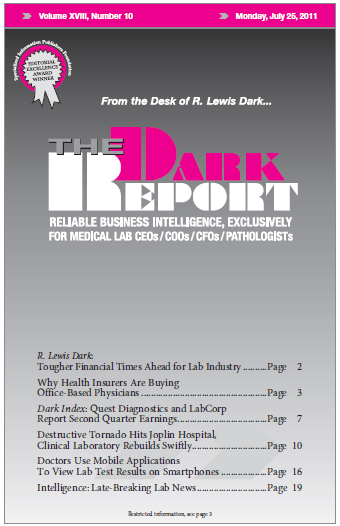WHEN THE NEWS BECAME PUBLIC earlier this month that UnitedHealth Group was quietly purchasing physician groups in selected areas of the country, there was a flurry of news articles recognizing this as a new trend. These news stories came after July 1. That’s the date when Kaiser Health News published an analysis of UnitedHealth’s strategy …
Why Insurers Are Buying Office-Based Physicians Read More »
To access this post, you must purchase The Dark Report.


